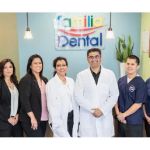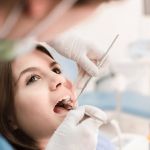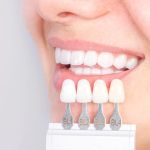Understanding Dry Mouth Syndrome: Causes and Concerns
Dry Mouth Syndrome, also known as xerostomia, affects millions of Americans, particularly as they age. It is a condition characterized by a noticeable decrease in saliva production, leading to discomfort and potential health issues. Saliva plays a crucial role in oral health by neutralizing acids, providing lubrication, and aiding in digestion. Therefore, its absence can lead to significant dental problems, including increased risk of cavities, gum disease, and difficulty in swallowing or speaking.
According to the American Dental Association, approximately 30% of individuals above the age of 65 experience some level of dry mouth. This condition can result from various factors, including medication side effects, systemic diseases, and lifestyle habits. As a result, understanding effective treatments for dry mouth is essential for maintaining long-term oral health and quality of life.
Identifying the Root Causes of Dry Mouth
The first step in managing dry mouth is identifying its root causes. Common causes include prescription medications such as antihistamines, decongestants, and blood pressure treatments. These drugs can interfere with saliva production, leading to clinical cases of xerostomia.
Visit Dentistry Toothtruth for more insights.
Hydration: The Foundation of Treatment
Maintaining adequate hydration is a fundamental strategy in alleviating dry mouth symptoms. Encouraging patients to increase water intake and hydrate regularly helps ensure a moist oral environment. It is recommended that adults drink at least 8 cups of water daily to promote optimal saliva flow.
In cases where drinking water is insufficient, healthcare providers may suggest the use of saliva substitutes and oral moisturizers available in sprays, gels, or lozenges. These products mimic natural saliva's functions and can provide immediate relief.
Nutritional Interventions for Dry Mouth
Nutritional modifications can also support the management of dry mouth. A diet rich in fibrous fruits and vegetables like apples, carrots, and celery can stimulate saliva production. These foods require more chewing, naturally triggering salivation.
Incorporating sugar-free gum or candies that contain xylitol can also help produce saliva while reducing cavity risks. According to several studies, xylitol not only helps in moisture production but also inhibits bacteria capable of causing tooth decay.
Medical Treatments and Professional Interventions
For patients with severe cases, medical treatments may be necessary. Dentists and healthcare professionals might prescribe medications designed specifically to stimulate saliva production. One such medication is pilocarpine, a sialogogue, proven effective in enhancing salivary flow.
Additionally, routine dental check-ups are crucial. A healthcare professional can offer tailored advice, monitor oral conditions exacerbated by dry mouth, and take proactive steps to prevent complications such as oral infections or decay.
Innovative Technological Solutions
Technological advancements are bringing new solutions to the market. Devices like the SaliPen use electrostimulation to activate salivary glands physically. Clinical trials have shown promising results, providing a non-invasive treatment option for persistent dry mouth conditions.
Conclusion and Call to Action
In conclusion, addressing dry mouth requires a comprehensive approach that includes lifestyle changes, dietary adjustments, and possibly medical interventions. Patients experiencing symptoms should consult with their dental care providers to tailor a treatment plan that effectively addresses their specific needs.
Taking proactive steps, such as staying hydrated, maintaining regular dental appointments, and exploring innovative treatment options, can significantly alleviate discomfort associated with dry mouth. For more personalized advice and innovative oral health solutions, visit Dentistry Toothtruth.

 Westgate Dental Arts
Westgate Dental Arts Coventry Family Dental
Coventry Family Dental Familia Dental
Familia Dental Dr. Daniel S. Fife, DDS
Dr. Daniel S. Fife, DDS Dentistry At Suburban Square: Michael I. Wollock, DMD
Dentistry At Suburban Square: Michael I. Wollock, DMD Comfort Care Dental
Comfort Care Dental The Importance of Oral Health Education During Pregnancy for a Healthy Pregnancy
The Importance of Oral Health Education During Pregnancy for a Healthy Pregnancy Why Skipping Dental Checkups Can Lead to Bigger Oral Health Problems
Why Skipping Dental Checkups Can Lead to Bigger Oral Health Problems Advantages of Porcelain Dental Restorations
Advantages of Porcelain Dental Restorations Best Tips for Brushing Your Teeth Properly for Healthy Gums: Essential Techniques for Oral Health
Best Tips for Brushing Your Teeth Properly for Healthy Gums: Essential Techniques for Oral Health How Can Diabetes Cause Tooth and Gum Problems? Preventing and Managing Oral Health Issues
How Can Diabetes Cause Tooth and Gum Problems? Preventing and Managing Oral Health Issues Healthy Habits for Promoting Good Oral Health and Hygiene: Tips for a Healthy Smile
Healthy Habits for Promoting Good Oral Health and Hygiene: Tips for a Healthy Smile